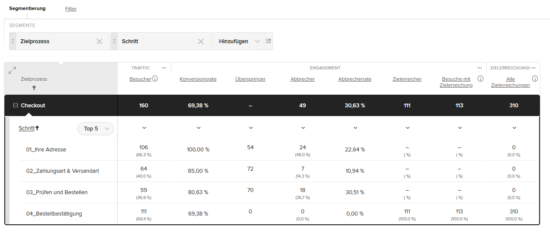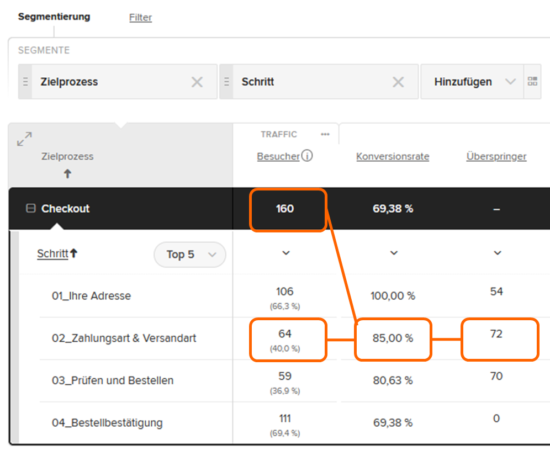Analyze target processes correctly

by Katrin Nebermann
Analyze target processes correctly
Target processes, also known as conversion funnels, are used to evaluate multi-stage steps leading up to a conversion.
A simple example: A visitor is taken to a special landing page with a Start free trial button. After clicking, the visitor is taken to a registration page where the form can be filled in and sent by clicking on Start now.
The associated target process therefore comprises these three steps:
- Call landing page.
- Call up the registration page or click on the Start free test button.
- Call up the registration confirmation or click on the Start now button.
It becomes more complex with processes that branch out, i.e. offer several options, or in which steps can be skipped. This classically includes checkout processes in stores when registered customers log in and can thus skip entering personal data, among other things.
The evaluation of target processes is often referred to as funnel analysis. The image of the funnel often fits, as many users start at the beginning of the process and only a few successfully complete the last step.
Setting up target processes in etracker analytics is very convenient thanks to the setup wizard with templates, provided of course that the associated page views and events are recorded correctly. The evaluation and derivation of optimization potential is also simple, even if steps can be skipped, as in the example shown.

This is how the key figures are to be understood:
- Visitors: Unique users who have reached one or the respective step at least once during the period.
- Conversion rate: Percentage of visitors who have either reached or skipped the respective target process step.
Example for “02_Payment method & shipping method”:
Conversion rate = (64 visitors + 72 skip visitors) / 160 checkout visitors

- Skippers: Have not called up this target step, but have reached one of the following steps.
- Canceler: Have called up this target step, but none of the subsequent steps.
- Dropout rate: Proportion of dropouts among all visitors to the step.
- Reached: Number of visitors who have reached the last step.
- Visits with target achievement: Number of visits that led to target achievement (last step). The key figure is higher than the “Target achieved” key figure if visitors reach the last step in several visits (e.g. make multiple purchases).
- All target achievements: Includes multiple target achievements within one visit.
Of course, the real art lies in drawing the right conclusions from the analyses and deriving hypotheses for conversion optimizations, e.g. using A/B testing. In addition, remarketing can be used with Signalize push messages to automatically address and win back abandoners after they have left the website.


